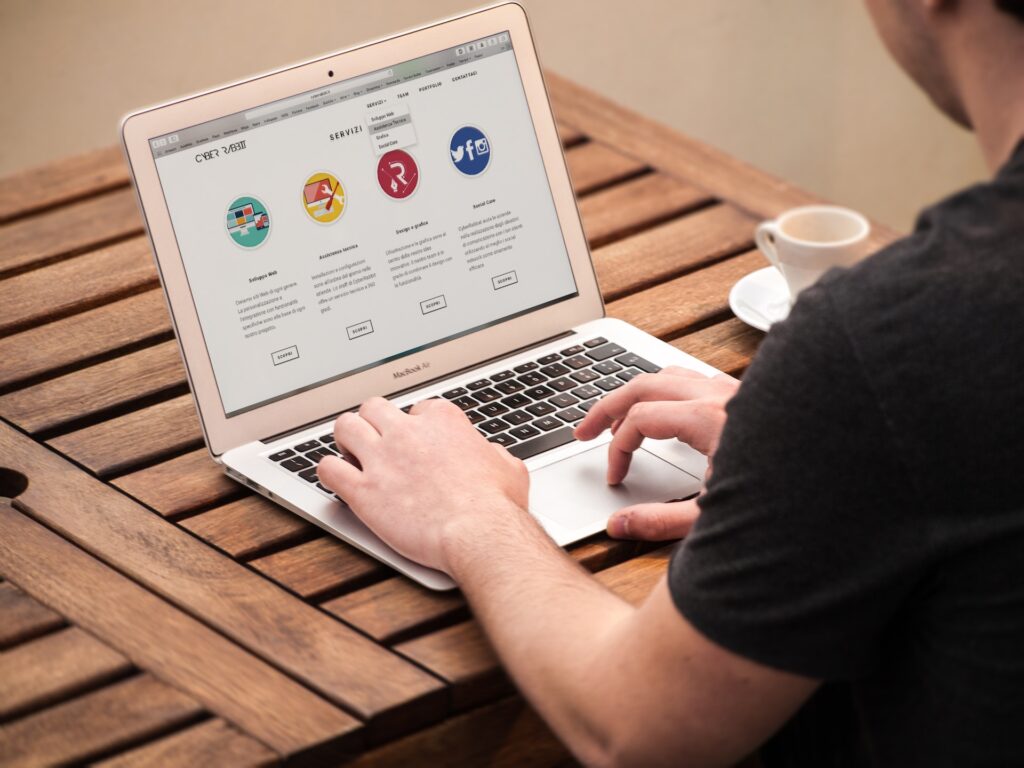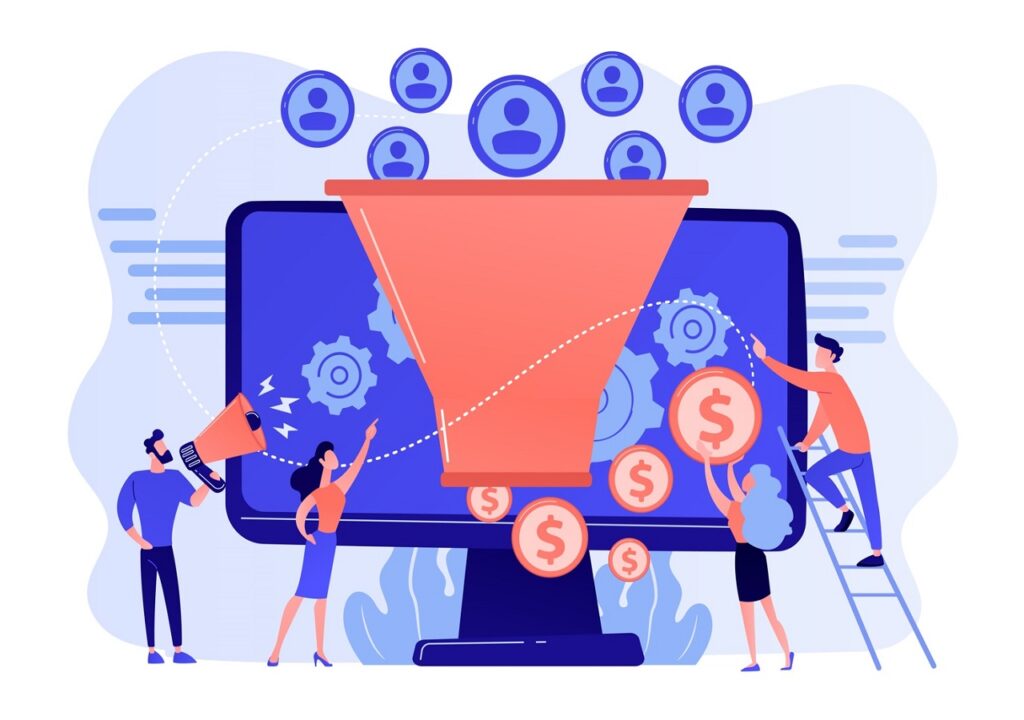Gamification in digital marketing is the process of using game mechanics and game design techniques to engage customers and promote desired behaviours. It has been used in a variety of settings, including business, education, health, and marketing.
The goal of gamification is to engage and motivate people to achieve their objectives. It can be used to improve employees’ performance, increase customer loyalty, and drive innovation.
It can be implemented in a variety of ways, including badges, leaderboards, points, and rewards. When used effectively, it can help people to overcome challenges, achieve their goals, and have fun in the process.
By gamifying your digital marketing campaigns, you can increase customer engagement, drive conversions, and improve brand loyalty.
Gamification can be used in a variety of ways, from simple reward systems to more complex challenges and quests. When done well, gamification can be an effective way to boost customer engagement and loyalty.
How can gamification improve Digital Marketing?
Digital marketing is always evolving and finding new ways to reach and engage consumers. Gamification is one way that businesses can improve their digital marketing campaigns.
By incorporating games and competition, businesses can make their marketing more interactive and fun. This can help to create a more loyal customer base and increase customer engagement.
Additionally, businesses can use gamification to collect data about their customers and their preferences. This data can be used to create more targeted and effective marketing campaigns.
What Are Some Good Examples Of Gamification In Saas?
Gamification can be a powerful tool for driving user engagement in SaaS applications. By incorporating game mechanics into the user experience, SaaS providers can encourage users to keep coming back to the application and keep using it.
Some good examples of gamification in SaaS applications include achievements, leaderboards, and badges. By awarding users for their activity in the application, SaaS providers can encourage them to keep using the application and help them form a habit of using it.
Gamification doesn’t just mean creating a game out of something. It can also involve using concepts from things like motivational psychology and behavioural economics to make it more fun. Gamification is really just user-centric design in disguise. Asking “why” instead of “how” helps identify users’ motivations for taking desired actions.
It is a common element of many SaaS products. By using game-like mechanics and principles, these products can engage and motivate users to achieve their goals. For example, Facebook and Twitter make heavy use of the concept of FOMO (fear of missing out) and social influence, two powerful motivational techniques.
Is Gamification a big business?
Yes, gamification is a big business. Gamification is the use of game mechanics and game design techniques in non-game contexts to engage users and solve problems.
It has been used in a variety of contexts, including marketing, to engage customers and motivate employees. Gamification can be used to increase customer loyalty and brand awareness, as well as to improve customer engagement and satisfaction.
Additionally, gamification can be used to motivate employees and increase their productivity., education, human resources, and health care.
How can digital apps and gamification improve education for the next generation?
Digital apps and gamification can improve education by making it more interactive and engaging. For example, apps can be used to provide feedback to students in real time, which can help them to improve their performance. Also, apps can be used to gamify the learning process, making it more fun and engaging for students.
These both can also help to improve education by providing more data and insights to educators, which can help them to tailor their teaching methods to better meet the needs of their students.
The key elements of games are:
- Competition & Mastery
- Rewards
- Status & Badges
- Socialize
- Collaboration
- Learn and Improve
Competition & Mastery:
In recent years, there has been an increase in the use of gamification in various industries as a way to increase engagement and motivation. Competition can be a great way to increase engagement and motivation. It can create a sense of friendly competition and provide a goal to strive for. Mastery, on the other hand, can provide a sense of accomplishment and pride. When used together, competition and mastery can be a potent combination to gamify any experience.
Rewards:
Using rewards as a form of gamification is a great way to increase motivation and engagement. By providing rewards for completing tasks or reaching goals, you can create a fun and interactive way to encourage employees or students to stay on track.
Status & Badges:
When it comes to gamification, one of the most popular features is the use of status and badges. By awarding users with badges for completing tasks or reaching certain milestones, it can help to motivate them to keep playing. In some cases, it can even lead to friendly competition among users.
Socialize:
Gamification can be used in a variety of contexts, including social media, education, and business. When used in social media, it can help users to connect with friends, family, and colleagues. In education, it can help students to learn and retain information. In business, it can help employees to be more productive and engaged.
Collaboration:
One of the most promising applications of gamification is in the area of collaboration. By making collaboration more like a game, organizations can encourage employees to work together more effectively. By adding elements of competition, fun, and rewards, organizations can make collaboration more engaging and productive.
Learn and Improve:
There are many benefits to gamification, including improved engagement, motivation, and even learning. If you’re looking to improve your performance in any area of life, consider using gamification to help you reach your goals.
There are many lessons we can learn from real-life games to make our products more enjoyable and engaging. The process of making products more addictive through game mechanics is called gamification.
What companies are in the gamification platform space?
There are several companies in the gamification platform space, including Big Fish Games, Bunchball, and GameOn. These companies provide platforms that allow businesses to gamify their processes and operations in order to engage and motivate employees.
- Big Fish Games
- Bunchball
- GameOn
The Badgeville platform offers six different gamification frameworks to cover a wide range of customer and employee experiences.:
- Core Gamification
- Community Expert
- Competitive Pyramid
- Gentle Guid
- Company Collaborator
- Company Challenge
Gamification can be used to improve employee performance, increase customer engagement, and drive innovation.
What are the best ways to implement gamification?
There are a few different ways that you can implement gamification into your business in order to increase engagement and motivation.
Gamification can be implemented in various ways, and the approach taken depends on various factors, including business objectives.
- focus on engagement and motivation
- make it a challenge
- create a sense of accomplishment
- targeted at customers or employees
- social engagement layer
- competition or collaboration
- specific behaviors or general engagement
Whatever route you decide to go, make sure that you clearly communicate the rules and objectives to your employees so that everyone is on the same page. Gamification can be a great way to add some fun and excitement to the workplace while also helping to boost productivity.
Examples of gamification used in various types of SaaS products:
HubSpot
HubSpot is a powerful marketing and sales tool that can help you manage your leads, customers, and deals. But did you know that you can also use it to gamify your life? That’s right, with HubSpot’s game mechanics, you can turn your daily tasks into a fun and rewarding experience.
Habitica
Habitica is a website and app that uses game-like mechanics to help users form good habits. It’s based on the principle of gamification, which is using game-like elements to encourage users to do something they might not otherwise do. The app helps users form new habits, and it’s a lot of fun to use.
Grammarly
Grammarly is a great tool for helping you to improve your grammar skills. However, you can also use it as a game to help you learn more about grammar. By using Grammarly as a game, you can improve your grammar skills while also having fun.
Khan Academy
A recent study found that Khan Academy is an effective form of gamification in the classroom. Gamification is the use of game elements in non-game contexts in order to engage users and motivate them to achieve their goals. In addition, the students who used Khan Academy were more likely to say that they would recommend the platform to others.
Perkville
Perkville is a loyalty program that rewards customers for their purchases and referrals. Customers earn points for every purchase and referral, which they can redeem for discounts, free products, and more.
Comarch Customer Engagement
Comarch Customer Engagement is a cutting edge tool that allows businesses to increase customer loyalty and engagement through gamification. By using Comarch Customer Engagement, businesses can create loyalty programs that reward customers for their loyalty and encourage them to continue doing business with the company
Bunchball Nitro
Bunchball Nitro is the next generation of gamification. It takes the best aspects of social gaming and applies them to the workplace, making it fun and engaging for employees while also helping to improve performance.
With Bunchball Nitro, employees can earn points, badges, and prizes for completing tasks and meeting goals. The platform also includes leaderboards and challenges to keep employees motivated and engaged.
Bunchball Nitro is an excellent way to gamify the workplace and improve employee performance. It is easy to use and implement, and any organization can customize it to fit its needs.
PowerStandings
PowerStandings is a gamified learning platform that helps people improve their skills and knowledge. It does this by tracking their progress and awarding points and badges for completing tasks and goals. But PowerStandings is more than just a game.
It’s a tool that can engage and motivate people to learn. And that’s why it’s becoming increasingly popular in education and other fields.
CallidusCloud SalesMotivate
CallidusCloud SalesMotivate is a great example of how gamification can help you stay motivated and on top of your game. By turning the sales process into a game, you can stay focused and motivated, and even have fun while you’re at it.
Axonify
Axonify is a company that specializes in gamification, or the use of game elements in non-game contexts in order to engage and motivate users. This can take the form of rewarding users for completing tasks, such as exercises or quizzes, with points, badges, or other virtual rewards.
Virginpulse
Virginpulse is an effective workplace wellness program because it uses gamification to engage and motivate employees. The program is designed to be fun and engaging, and it has been shown to be successful in motivating employees to make healthier choices.
Xoxoday
Xoxoday is a cloud-based gamification platform that helps companies incentivize and engage their employees. With Xoxoday, businesses can create custom challenges and rewards programs that fit their specific needs.
Badgeville
Badgeville, the gamification platform, offers a new way to look at employee motivation and productivity. By using game mechanics, Badgeville encourages employees to keep up the good work and continue to improve their performance. The platform also allows managers to see which employees are excelling and where they need improvement.




